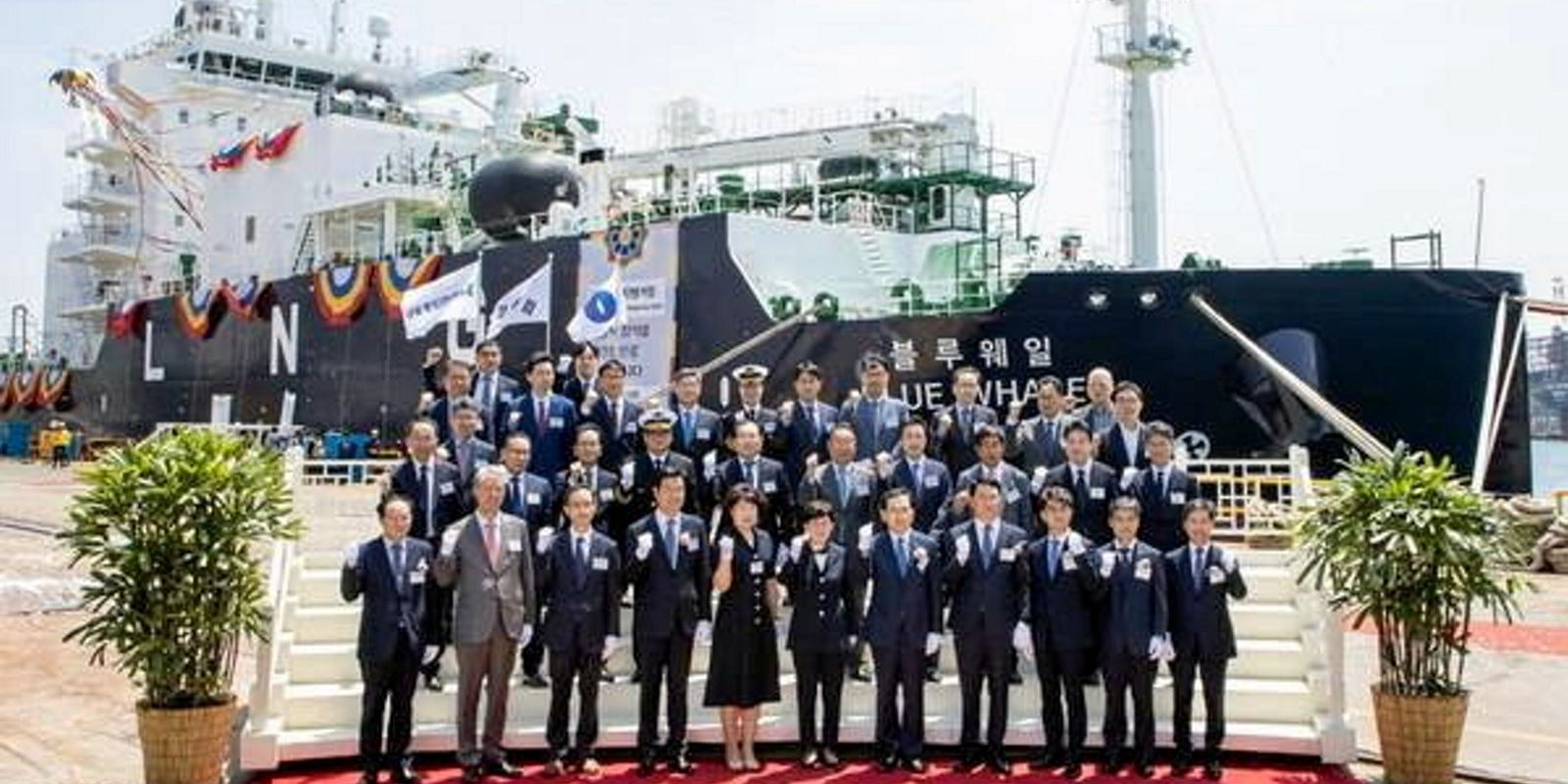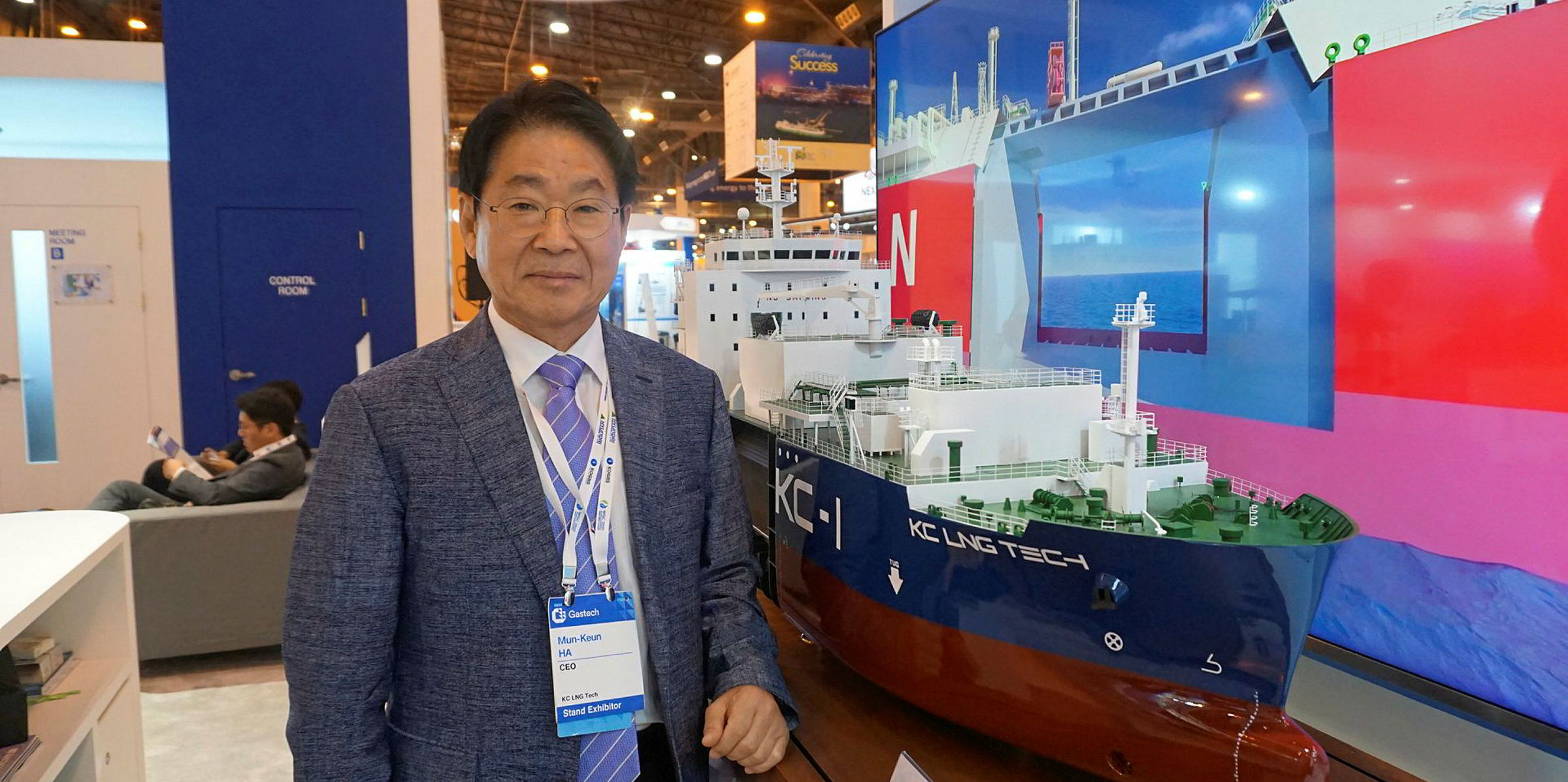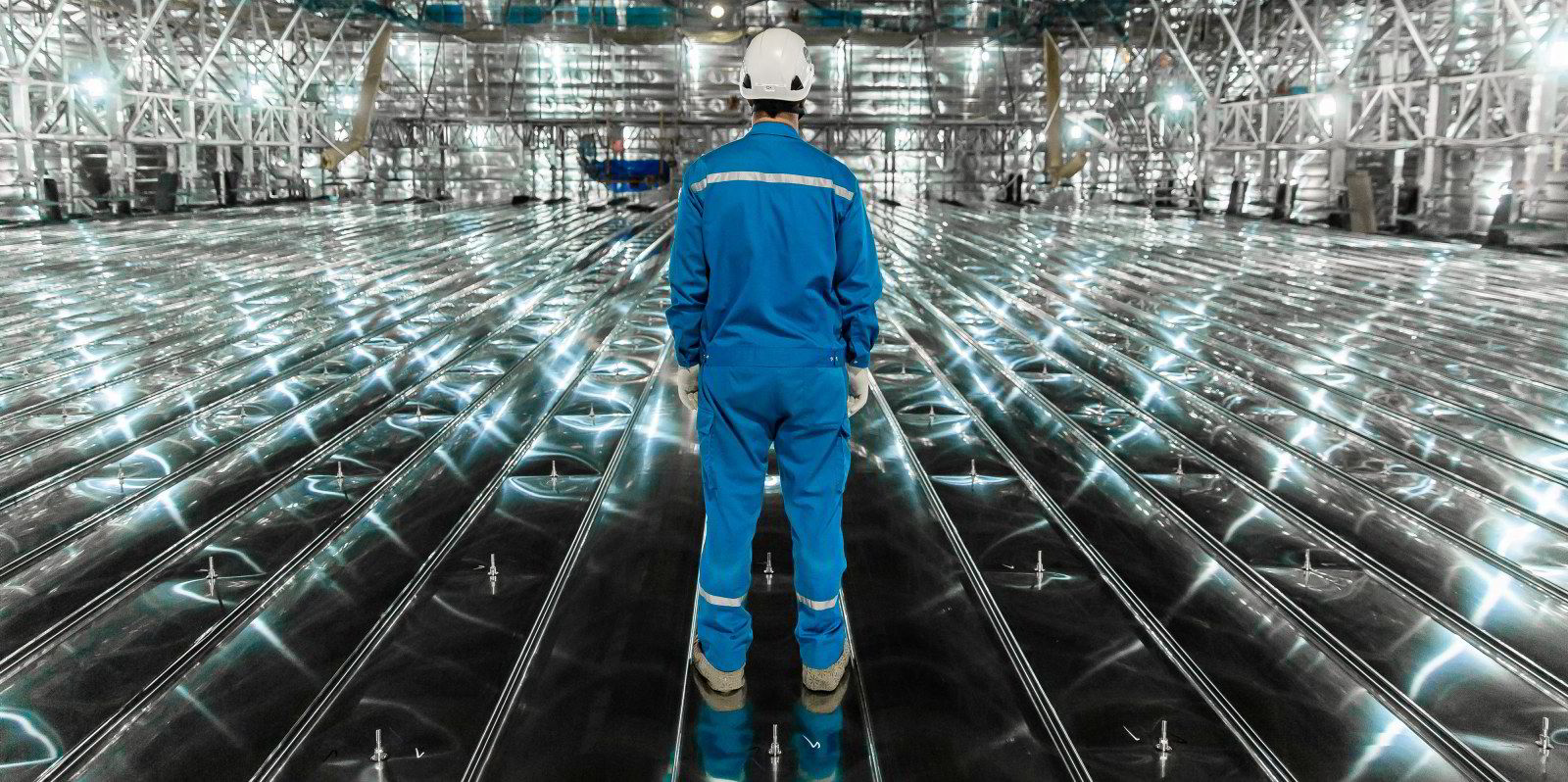A new South Korean-designed LNG cargo containment system has been rolled out with the delivery of a bunker vessel.
The 7,500-cbm newbuilding Blue Whale, which was named on Wednesday, has been built at Hyundai Heavy Industries and fitted with a KC-2 membrane-type cargo system, South Korea’s Ministry of Trade Industry and Energy said.
The KRW 55.3bn ($41.7m) vessel is the first ship to be trialled with KC-2 tanks, which is the next version of the KC-1 system designed by Korea Gas (Kogas).
South Korean shipbuilding sources told TradeWinds that there were some initial problems with the KC-2 system on Blue Whale. The ship was returned to dry dock but then did not undertake further gas trials and was delivered on Wednesday. According to databases, it was originally scheduled for handover in February.
They said construction and details of the vessel have been kept under wraps.
The LNG cargo containment system for the ship has been developed by HHI.
The ship is to be managed by up-for-sale South Korean shipowner Hyundai LNG Shipping and owned by Kogas.
South Korea has spent years making strenuous efforts to crack membrane-type LNG containment system design and construction, with Kogas taking the lead. To date designer GTT has dominated the sector, with shipbuilders licensed to build the French company’s systems and paying a per vessel fee for each LNG carrier newbuilding.
But Kogas’ first commercial effort the KC-1 system proved a failure for two full size LNG carriers.
The 174,100-cbm SK Serenity and sistership SK Spica (both built 2018) remain out of service and mired in legal arguments among Kogas, its LNG cargo tank technology arm KC LNG Tech, shipowner SK Shipping and builder Samsung Heavy Industries.
The SK Serenity lifted two cargoes from the US before icing was found on its hull, suggesting a possible cargo leak, and the ship was pulled from service. The SK Spica never loaded a shipment.
Repair work has not proved successful.

KC-1 was also installed on two small-scale vessels which on charter to Kogas and trading in Korean waters.
In 2019 KC LNG Tech spoke to TradeWinds about developing an updated version of its LNG cargo containment system which it dubbed KC-2 which would be an improved version of KC-1 built on the learnings from the problems experienced with that first version. It said a mock-up tank was being prepared.
The trade ministry said on Wednesday: “It is our shipbuilding industry’s achievement after 20 years of hard work. We will be able to secure advanced, high-value homegrown cargo technology, as the Blue Whale will verify the KC-2 system for commercialisation.”
Blue Whale’s appearance, and talk of another barge-based, South Korean-designed LNG vessel at Samsung Heavy Industries, comes after the Supreme Court of Korea on 13 April rejected GTT’s final appeal against the splitting of the company’s its technology licences from the technical assistance it provides.
GTT is now obliged to discuss this split with South Korean yards if they request this from the company.







